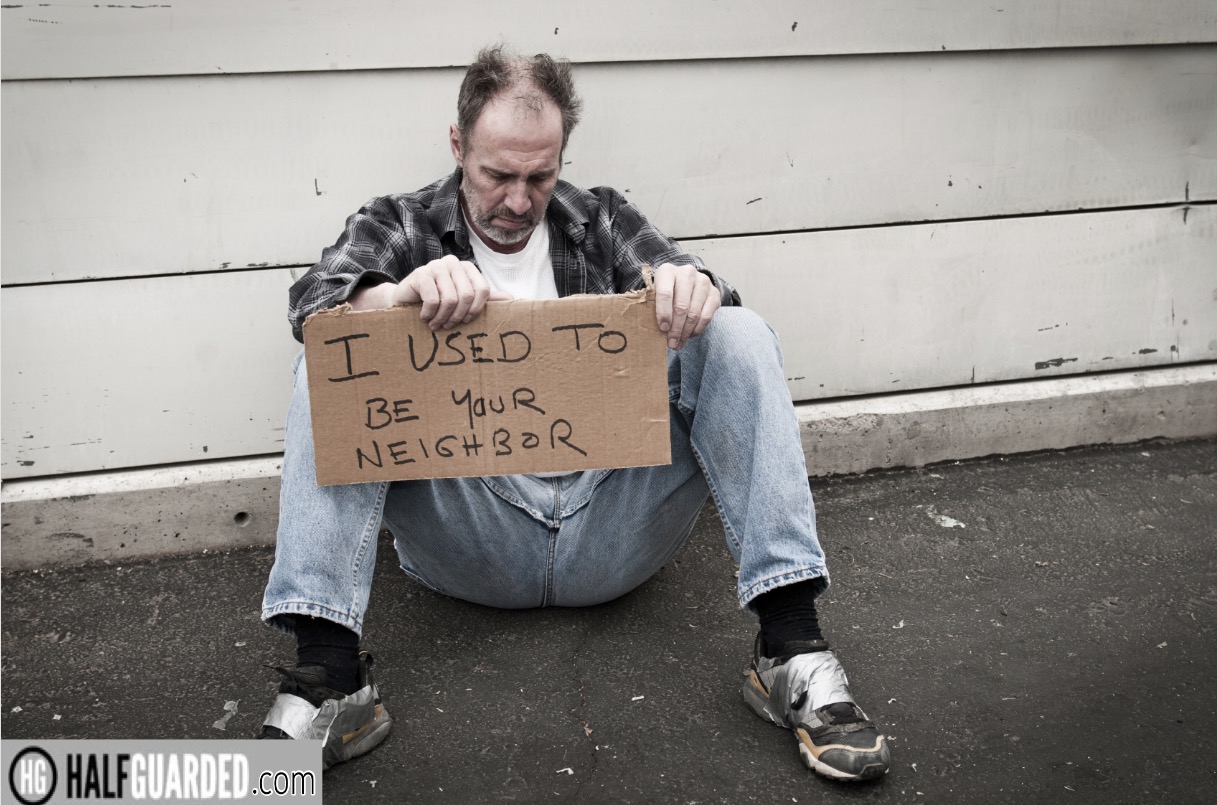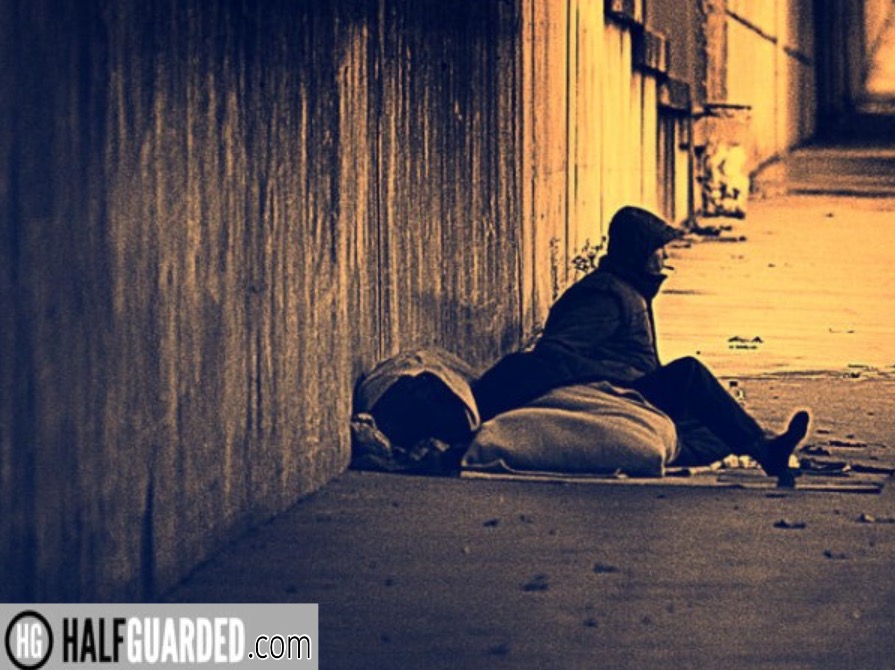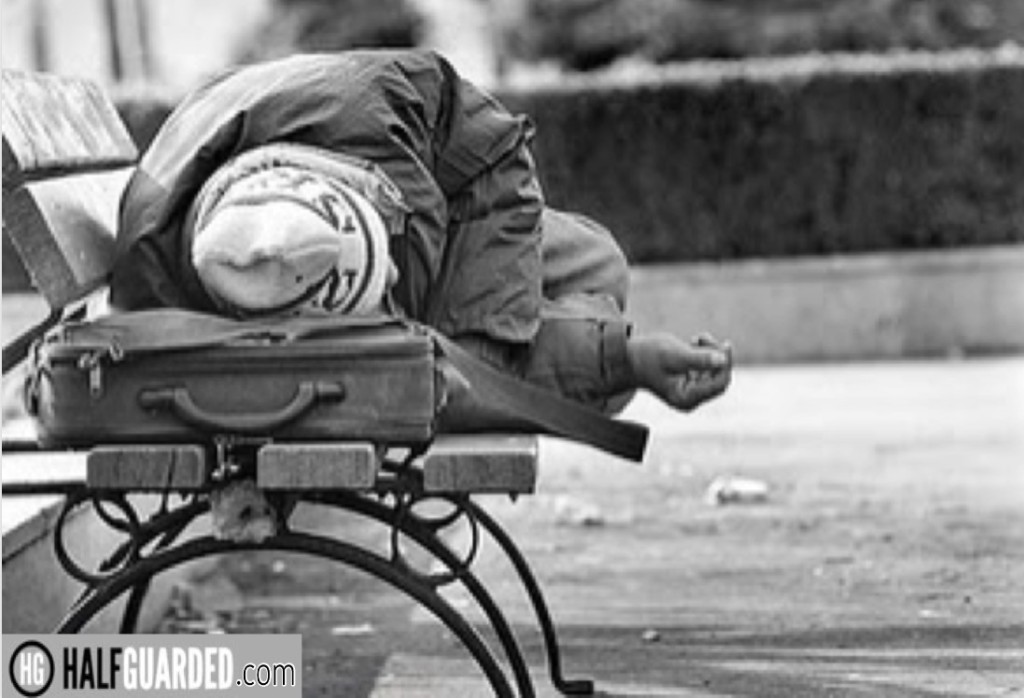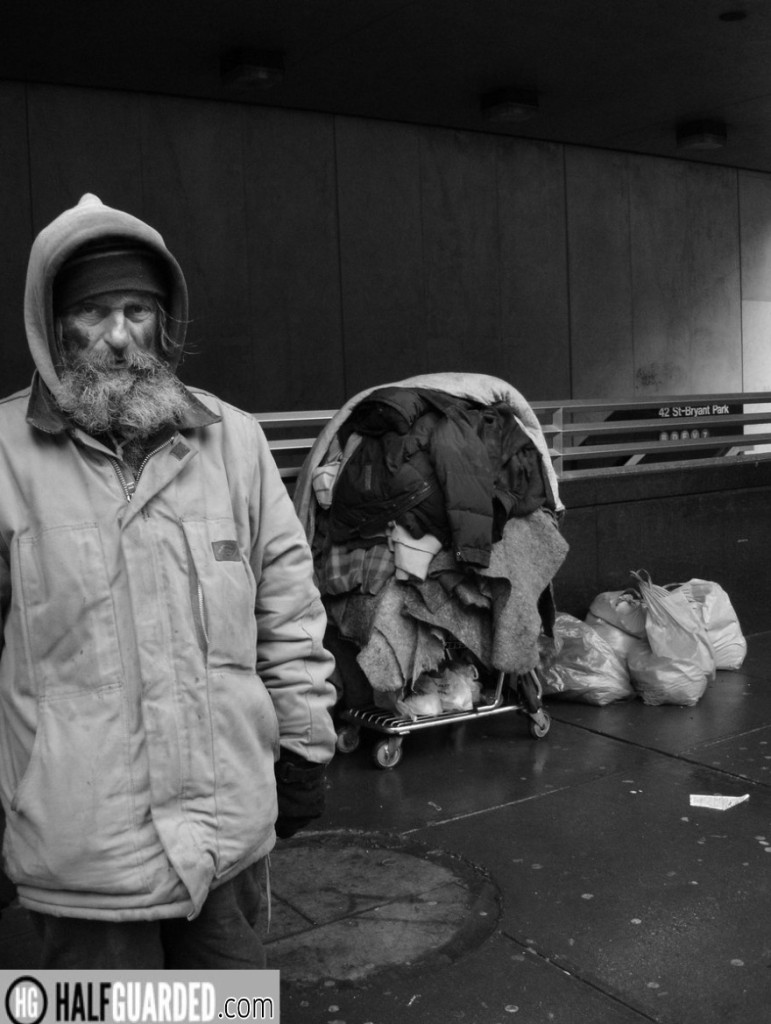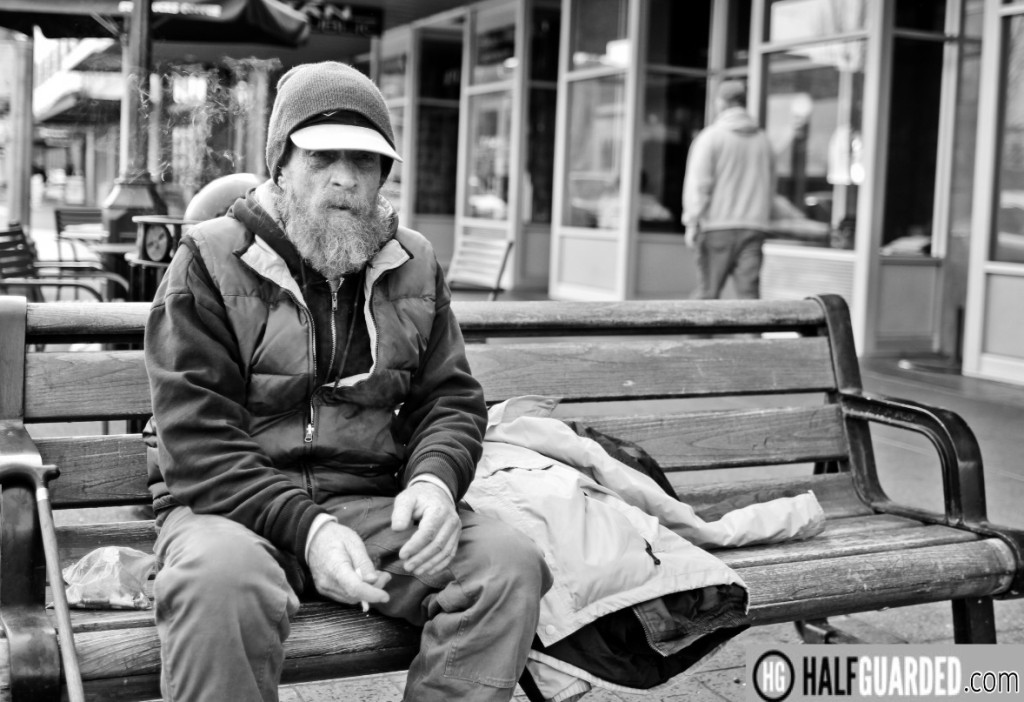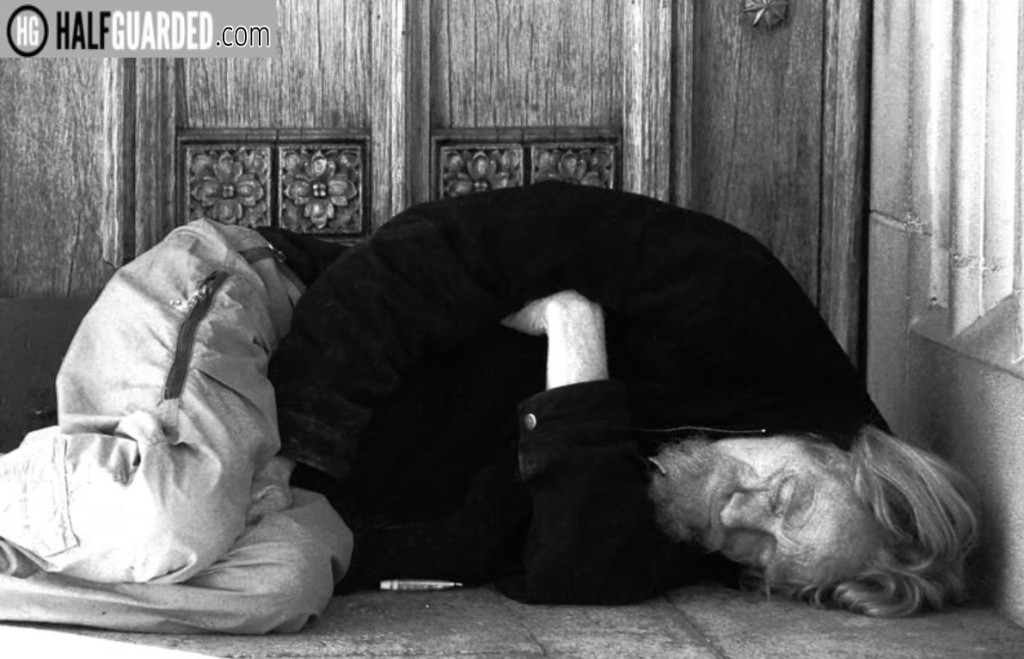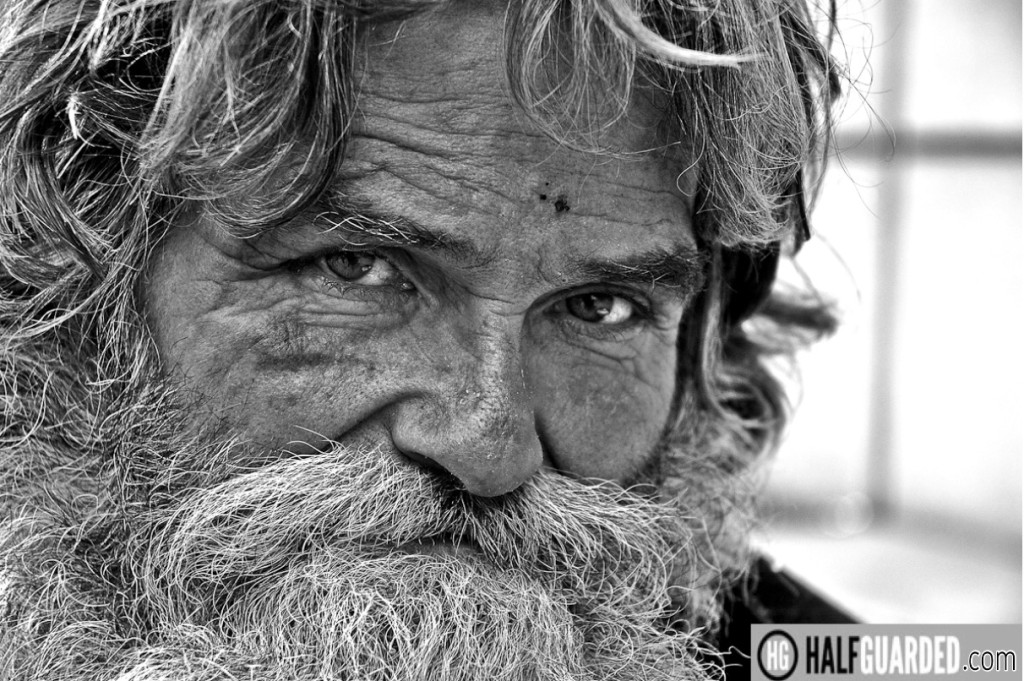Every year in the United States, National Hunger & Homelessness Awareness Week is held just before Thanksgiving. The event – often “celebrated” on college campuses across America – is meant to draw attention to a host of poverty-related issues. Frequently, this comes in the form of outdoor “sleep-out” experiences which are supposed to give young people a taste of what actual homelessness is like.
We’ll get back to that in a moment, but first, I think it’s important to take a look at who is sponsoring the annual “festivities.”
The event is an initiative of the National Coalition for the Homeless (NCH), a nonprofit started in New York in the ‘70s. According to their latest financials, the organization, which has numerous affiliate projects throughout the U.S., takes in about $10 million a year. Per their last tax filings, the organization received about $9 million in contributions for the 2013 fiscal year and held about $19 million in assets. About $5 million of the year’s revenue came from non-government gifts, while the remainder largely stemmed from federal, state and local grants.
According to their most recent 990, however, the organization barely pulled in $700,000 from a year’s worth of fundraising activities (a lackluster return-on-investment, seeing as how the organization lists a little over $1 million in fundraising expenses for the year.) That same 990 reveals some interesting details about where the organization’s yearly income is being spent. In the 2013 fiscal year, the NCH doled out $1.2 million to its top executives. On top of that, the organization spent another $2.6 million in additional employee wages and salaries, $1.4 million in benefits and pensions and $1.3 million in office, travel and meetings expenditures.
In short, 60 percent of the organization’s revenue went towards overhead costs. That left a little under $3 million left for actual homeless advocacy and programs support — which is actually closer to just $2 million, seeing as how $800,000 or so of the nonprofit’s “contributions” to the homeless community that year came in the form of subway passes, furniture donations and food drop-offs for Meals for Wheels-type programs.
The USDA sets the individual federal poverty line this year at $11,777. Presumably, even that is quite a bit more than what the average homeless person in the U.S. makes on an annual basis. Meanwhile, the president and CEO of NCH, Mary Brosnahan, pays herself $327,000 a year. Call me cynical, but I have a hard time believing anyone who claims to “fight” poverty when their take home pay is well over six times the aggregate middle class worker’s … and about 27 times more than the aggregate impoverished American.
Homelessness is a complex issue, to be sure. In fact, it’s next to impossible to quantify it, as the U.S. Department of Housing and Urban Development and the Department of Education differ wildly on what the term “homeless” actually means. Furthermore, the absolute best federal instrument for gauging homelessness – HUD’s Point in Time analyses – only collects data from one random night per year, uses highly suspect means to count up “unsheltered” homeless individuals and completely factors out homeless people living “doubled up” with friends, relatives or in hotels.
Simply put, nobody has a clue as to how many people actually are homeless in the U.S., but it’s a pretty safe bet that whatever numbers you are hearing in the latest and greatest federal report are a severe undercount.
The stereotypical portrait of a bag lady and a disheveled old man in rags is a relatively small percentage of the total U.S. homeless population. By no means is that meant to stigmatize or belittle the miseries of those who do live in such predicaments – indeed, theirs is a special cause, which in and of itself, requires very targeted and concentrated solutions. Alas, per HUD’s undependable estimates, the chronic homeless represent roughly a sixth of those sans a fixed nighttime residence in the country. That means an overwhelming majority of the nation’s homeless are people experiencing temporary displacement – be it for economic or safety reasons. At least one report suggests as many as one-out-of-30 children in the United States experience at least one night of homelessness per year. According to FAFSA, at least 58,000 of the nation’s 17 million college students are experiencing some degree of homelessness on a given year. The same holds true for about 50,000 military veterans – and remember, these are the extremely conservatives estimates we’re talking about here.
Which brings us back to those college “encampments.” Never mind that the exercise hardly does a serviceable job of replicating the actual plight of America’s unsheltered homeless – to do that, students would have to be set ablaze, forced to drink drain cleaner and heavily fined merely for existing (in California alone, at least 50 cities have effective ordinances outlawing “vagrancy” – in many instances, those who commit the unforgiveable sin of feeding another human being get penalized, too.) Indeed, these trite “tent city” simulations do precious little than other the nation’s homeless, to paint them as beings outside the social system. The frank reality is that, five times out of six, the homeless in America aren’t the people we see holding up cardboard signs and shambling down grimy alleyways. Instead, the homeless are the people who sit next to us in class, the people we brush elbows with at Starbucks and the people serving us Burger King and McDonalds meals.
The homeless are people who live in extended stay hotels, the backseats of their cars and bounce from couch to couch with their friends. They sleep in their distant relatives’ garages and their significant others’ basements. More often than not, they are hard-working, honest people who just don’t have the social supports to steady themselves. Nor do they have the financial resources to afford market-rate housing, which report after report after report says is the number one reason why people are homeless in the United States today.
Yes, many people in the U.S. are persistently homeless. Yes, many of them have significant mental health and substance use issues. But the stats tell us that isn’t the case for a majority of the nation’s homeless – indeed, they are “normal” people, who are just going through momentary displacement periods, thanks to a lack of both fiscal capital and social capital.
Contemporary U.S. homelessness is unmistakably a two-pronged problem. On one hand, it’s an economic matter – the cost of renting an apartment unit or some other form of housing is generally well above the minimum wage threshold, and the nation’s public housing inventory continues to dwindle. Alas, nothing short of a complete government takeover of the real estate industry is going to fix that, and it is similarly absurd to believe the private and nonprofit sectors have any sort of incentive to make those kinds of changes themselves.
The other problem, however, is something a lot of people tend to overlook when mulling homelessness. There are a lot of poor people in America. Indeed, there are a lot of people who live below the federal poverty line. So what keeps them from becoming homeless?
Government benefits might play a significant role, but those alone are not enough to ensure a poor person stays off the streets or in shelters. The biggest difference – perhaps even the key variable – is social support. Does a poor person have someone who will take them in and shelter them and feed them and keep them safe until they can get back on their feet again – a relative, a close friend, a significant other? Well, if that’s the case, that person most likely will not end up homeless, or at least not homeless for an extended period of time.
Simply put, the greatest deterrents to homelessness are personal bonds. If someone knows a lot of people and shares a particular closeness with others, it’s fairly unlikely that same network of acquaintances is just going to let them spiral into destitution. It’s a nice idea to think the government can just give people money and (theoretically) free services and they’ll do all right, but without genuine social supports, people are left perpetually prone to extreme poverty.
This is nothing close to a new idea. Left-leaning Robert Putnam floated the idea in his seminal 2000 work Bowling Alone and right-winger Charles Murray touched upon it in his 2012 tome Coming Apart. Simply put, the general life outcomes for those who are deeply invested in and engaged with authentic social networks far exceed those with fewer human bonds. If you know a lot of people, and a lot of people know you, you will never end up homeless.
This a much thornier issue than the economic problem. Even if just hypothetically, that’s a problem that can be solved by public policy. How in the world are you supposed to make people more sociable, friendly and attuned to the needs of others?
That’s something you can’t legislate, which probably explains why today’s politically-contentious masses have so little interest in discussing it. If we wait for politicians or multibillion-dollar angel investors to come along and solve the problem for us, it’ll never happen. Instead, this is something we are going to have to do within our own communities. It’s a value we’re going to have to instill in our own children and an ideology we’re going to have to cultivate within our own civic groups.
The problem will never be solved as long as we view homelessness as some sort of guilt-based humanitarian cause. Rather, it has to be something we are personally involved and invested in, a situation where we are helping out others due to a legitimate personal concern instead of merely feeling bad for the “less fortunate” (itself an insulting, responsibility-deflecting term, which chalks up homelessness as the end product of “luck” instead of classist policy decisions and the failure for communities to build adequate social services.)
Putting up a tent on campus for a week isn’t going to solve anything. Considering the measly revenue generated by NCH fundraisers, I’m hardly hesitant to state that aiding gigantic poverty-advocacy nonprofits doesn’t do much good, either.
As with all effective social movements, it has to begin locally. That means supporting and rallying behind evidence-based service programs and local institutions that demonstrate proven results. My personal measuring stick? If a nonprofit’s overhead represents anything greater than a third of their revenue, I don’t even give them the time of day. That also means putting pressure on the civic groups that aren’t doing their part to help out the local homeless. If a church, synagogue or mosque in your neighborhood is spending money on flat screen TVs and lavish audio systems instead of food pantries or overnight shelters, you need to give them an earful.
From there, it’s a matter of affecting local policy. If you live in one of the thousands of cities across America with anti-vagrancy ordinances, I’d suggest reminding them of an edict passed down from the Department of Justice in August, which deemed arresting or fining homeless people for sleeping in public to be a violation of the Eighth Amendment. That may not change the legality of other anti-homeless ordinances – namely, urban encampments and panhandling regulations – but it certainly sets precedent to begin repealing some of the other local laws that discriminate against the poor.
The largest piece of the problem – which, admittedly, is something we are unlikely to change anytime soon – revolves around the issue of affordable housing. With fewer and fewer government incentives, there is no reason for private developers to enter the market, while the few public-private partnerships that do exist are skewing more towards hybrid “mixed-income” units targeting senior citizens. That’s fine and dandy for the elderly, but it’s draining the already scant public resources for working class families and creating even less housing options for low-income earners.
That is the issue that organizations like NCH should be focused on. Homelessness isn’t a problem unto itself, it’s the aftermath of mathematically impossible living costs running headlong into the government’s failure to create and enforce income-based housing regulations, while the better-off remain either oblivious or indifferent to the issue. Although you probably can’t convince your local government to implement standardized unit rates based on multiples of the federal poverty line or start up excess reserve funds for low-income subsidies, you can at least let your local leaders – politically and economically – know that this is an issue that matters to you, regardless of your own SES.
There will always be homeless Americans. It is inescapable. While we cannot eliminate the problem altogether, we can make great strides in treating the condition, especially when it comes to preventative measures that keep low-income individuals from becoming displaced at all.
Multimillion dollar nonprofits cannot do this. This is something that can only be done from within neighborhoods, because people genuinely care about what happens to those around them.
Forget funding, forget legislation and forget the income inequality rhetoric. Until people develop an authentic concern for their neighbors’ wellbeing, the homelessness problem will just get worse and worse. But why should you care? It’s those other people, right?
Funny how you never realize how much social support services are needed in your community … that is, until you find yourself reaching out for help one day, and no one around you even bothers taking their hands out of their pockets.

